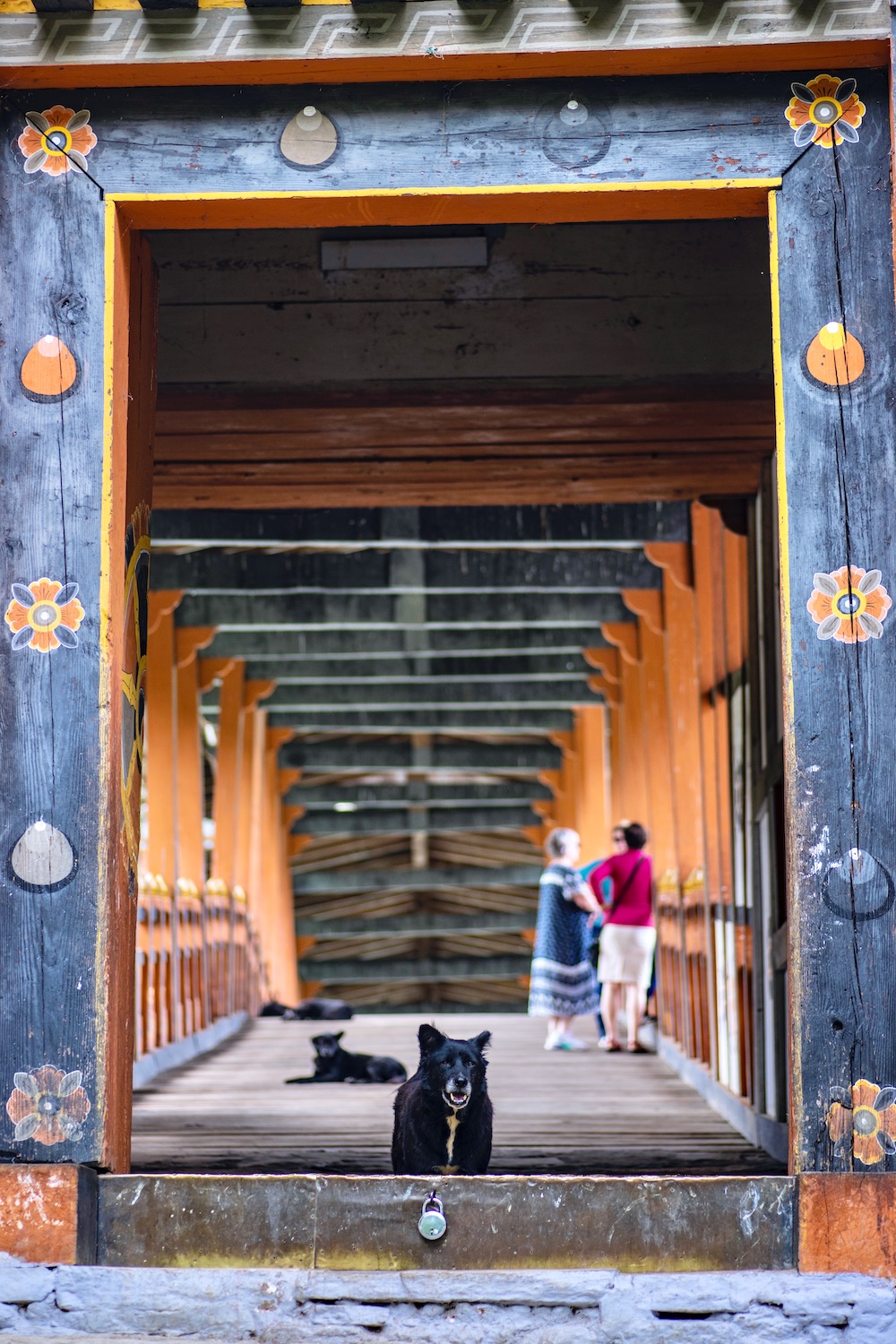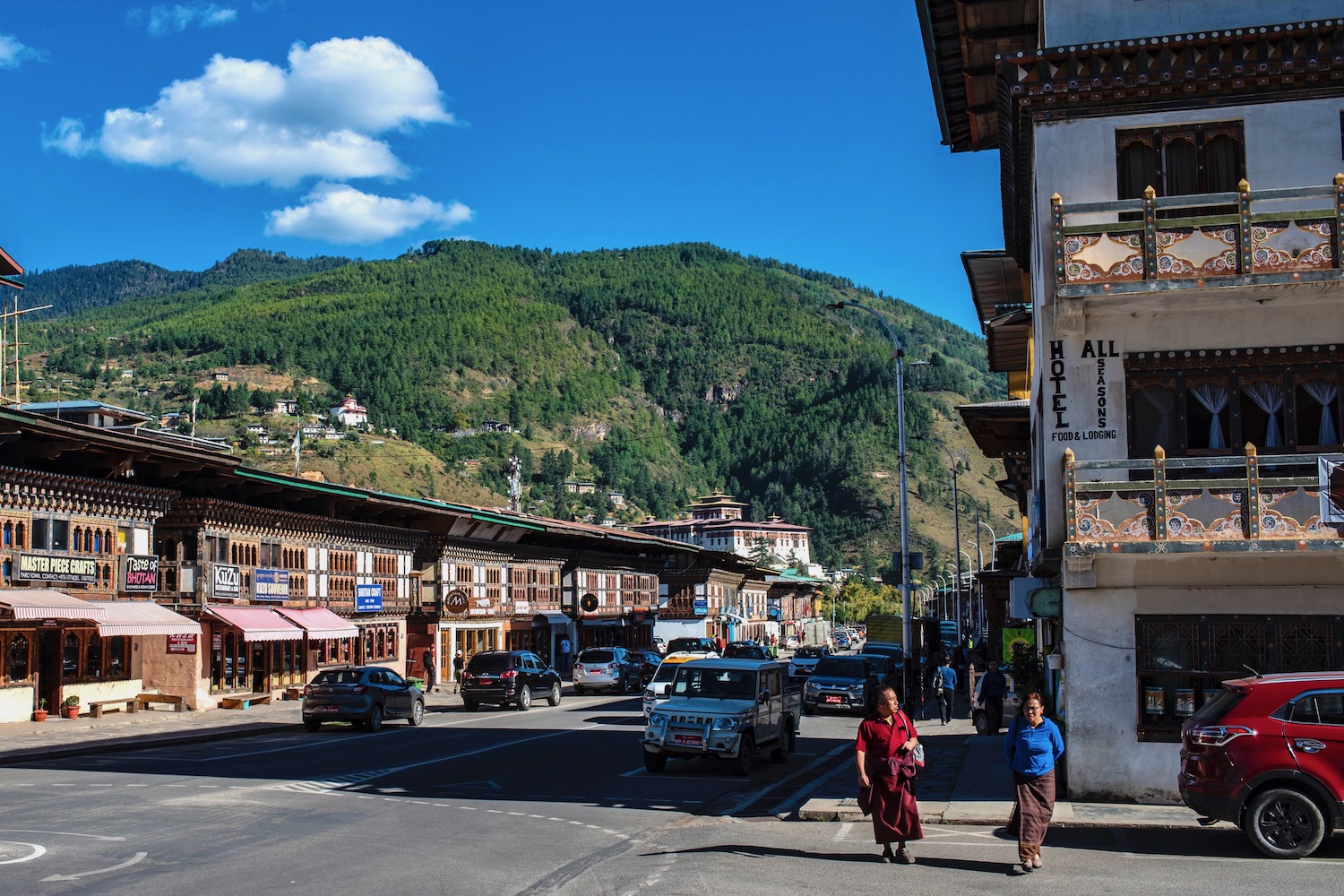Bhutan Starts Here
Bhutan spent more than a decade near the top of my bucket list. It might shock you to learn, then, that I felt pretty underwhelmed upon landing at Paro International Airport, and for almost the entirety of my time in the Bhutanese capital of Thimphu.
The story doesn’t end here, of course. As I explained in the essay I wrote just after returning from Bhutan, the country is the very picture of a slow-burn destination. I eventually fell in love with Bhutan; it just took some time.
While I can’t guarantee that my Bhutan itinerary will spare you the disappointment I initially felt, I am pretty certain that you’ll leave feeling just as satisfied as I did.
Practical Matters
When to visit Bhutan
Bhutan has reasonably good weather throughout most of the year. Being a Himalayan country, of course, it can get bitterly cold during the winter months. The best times to visit Bhutan are in November, when skies tend to be clear and temperatures are crisp, and in April or May, when the rhododendrons bloom just before the annual monsoon begins.
How to get to and around in Bhutan
Getting to Bhutan is slightly cumbersome. Direct flights only exist to a handful of nearby cities, including Bangkok, Delhi, Dhaka and Kathmandu. And since Bhutanese carriers like DrukAir and Bhutan Airlines have a monopoly on these routes, prices are expensive. You can expect to pay at least 500 USD round-trip from Delhi or Kathmandu, and 800 USD round-trip from Bangkok.
In the past, the only way to get around in Bhutan was via tour company vehicles, since you had to be on a guided tour to be able to enter the country. These days, of course, you can go to any taxi stand in any Bhutanese city and hire a driver for an hour, for the day or for the entire week. If you’re going to Bhutan and want to be put in touch with a taxi driver, send me an email and I’ll be happy to put you in touch with mine.
Where to base yourself in Bhutan
Three cities make up the “tourist belt” of Bhutan; from east to west they are Paro, Thimphu and Punakha. While Thimphu is the capital and largest city of Bhutan, and is also “right in the middle,” it’s my least favorite of these cities. Personally, I think Paro makes the most enjoyable base that’s also practical (on account of its proximity to the Tiger’s Nest, while Punakha has the most pleasant weather and vibe.
Money, costs and communication
Although the guided tour era (where you’d need to pay as much as 500 USD per day even to enter the country) might’ve had you believing differently, Bhutan is a poor country—it’s also a relatively cheap country, at least if you aren’t taking organized tours. I only spent around 150 USD (around 12,000 Bhutanese ngultrum, BTS, a currency equivalent in value to the Indian rupee) per day for my accommodation, transportation, meals and activities, and I wasn’t slumming it.
Note that cash is very much still king in Bhutan—and, perhaps paradoxically, many ATMs in the country don’t work. As a result, I recommend bringing a decent amount of USD cash with you, probably no less than 100 USD for every day you’ll be there. You never know when cash will be the only option, or when there will simultaneously be no option to get cash out of an ATM.
Communication-wise, Bhutanese people speak relatively good English, albeit with a thick accent. In terms of figurative communication, WiFi is slow and not as ubiquitous as it is virtually everyone else in the world. Only a couple of companies sell eSIMs that can used in Bhutan, a country that as of 2025 does not fall under the scope of service for global cell carriers like Google Fi.
Bhutan visas and SDF
Prior to covid-19, foreign tourists were required to pay a Sustainable Development Fee (SDF) equal to 250 USD per person, per day in the country. In addition, travelers had to book an organized tour (with a minimum cost per day also around $250) in order to to have their visas approved. The good news? The organized tour requirement has been dropped; the SDF has been slashed to 100 USD per day.
The better news? You can now complete your entire visa process online via this official Bhutanese government website. While the payment system is a bit janky and even a minor error can cause your application to get held up, I do know from personal experience that it is possible to get your Bhutan eVisa within a few days of applying. The government has said they aim to speed this up even further in the future.
Places to Visit in Bhutan
Thimphu





I’ll be very frank: Thimphu is probably my least favorite city in the entire Himalaya region. It’s dusty, residential and not very interesting, and with a few exceptions (well, two big ones: Thimphu Dzong and Buddha Dordenma) doesn’t really have anything worth seeing. If you’re on a very short trip to Bhutan, I’m not sure it even makes sense to come here at all.
Dochula

The Dochula Pass doesn’t often get mentioned in a given Bhutan travel blog, because let’s face it: It’s a one-trick pony. Well, two-trick maybe. The Dochula Monastery, you see, overlooks a scenic Himalayan viewpoint, which to be fair is more or less obscured at least half of the type. You’ll stop here on your way to Punakha—make sure to stop on the way back if it was cloudy on the way there.
Punakha





Speaking of Punakha, I’d say it’s a pretty underrated destination. Punakha Dzong is not underrated; it’s amazing, but it has a well-deserved reputation as the most beautiful monastery in Bhutan. To me, what’s special about Punakha is its subtropical climate and vegetation; its enchanting suspension bridge; and the village of Sopsokha, which went viral a few years ago due to the penis-laden “fertility art” adorning many of its builkdings.
Paro





Another place that impressed me during my Bhutan itinerary? Paro, the city where the airport is located. Because of this fact—its proximity to the airport—I didn’t expect much from Paro. But in addition to being the place closest to Paro Taktsang (known more commonly as the Tiger’s Nest—more on that in a minute), it’s a charming and cute town with plenty of other attractions within walking distance.
The Tiger’s Nest





The Tiger’s Nest, in spite of being the most hyped destination in Bhutan, very much lives up to the hype. The monastery itself is fantastic, both in terms of architectural merit, as well as the fact that it’s hewn into a rock wall thousands of feet above the country. The trek is also fantastic—long enough to wear you out; short enough to do in a morning or afternoon.
How Many Days In Bhutan is Enough?
If visiting Bhutan were like visiting any other country—in other words, you could just turn up and present your passport—I’d say that you should spend about a week there. This would give you 3 nights each in Punakha and Paro, and a night in Thimphu (if you wanted). Or two nights each in Punakha and Paro, and the opportunity to head farther east. Unfortunately, the Bhutan SDF (even the reduced one) makes this impractical.
As a result, I’d say that for most travelers, the answer to how many days in Bhutan is between 3-5. A three-day trip is perfect for basing yourself in Paro and doing day trips to the Tiger’s Nest and Thimphu and/or Punakha, while four days could allow you to split the trip evenly between Paro and Punakha, stopping in Thimphu and Dochula on the way from one city to the other, or vice-versa.
Other FAQ About Planning Your Trip to Bhutan
What is the best month to visit Bhutan?
November is the best month to visit Bhutan if your priority is pleasant daytime temperatures and plentiful sunshine. The springtime (so, April and May) can also be nice, though tend to be a bit rainier. The advantage of choosing spring over autumn is that you can see Bhutan’s famous rhododendrons, which color the Himalayas a brilliant magenta.
Is it expensive to go to Bhutan?
Bhutan is no longer expensive to visit, since the guided tour requirement has been dropped and the Sustainable Development Fee (SDF) has been lowered from 250 USD per day to 100 USD per day. It’s possible to travel in Bhutan, all-inclusive, for somewhere between 100-200 USD per day for most travelers. This does not include the price of flights to and from Bhutan, mind you—and they are expensive. You’ll pay around 800 USD round-trip from Bangkok, and 500 USD from Delhi or Kathmandu.
Do you still need an organized tour to visit Bhutan?
In the wake of covid-19, the Bhutanese government removed the longstanding guided tour requirement for foreign visitors. While it remains to be seen whether or not this will be permanent, as of 2025, it makes visiting Bhutan a lot easier and more accessible, not to mention cheaper.
The Bottom Line
This Bhutan itinerary will help you plan the trip you’ve always dreamed of, but probably didn’t think you could ever take. If you’re like me, to be sure, the former guided tour requirement (and 250 USD-per-day “SDF” charge) were probably non-starters for you. Thankfully, of course, both of these impediments are now a thing of the past, which means a trip to Bhutan is now in your future. Armed with my advice and insights, your adventure will come together easily and smoothly, with only the finest of details left to decide. Need personalized help planning your Himalayan odyssey? Consider hiring me as your Travel Coach!






